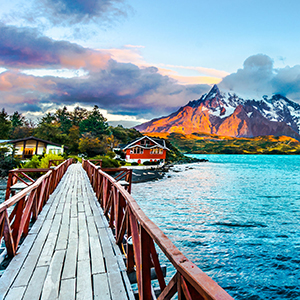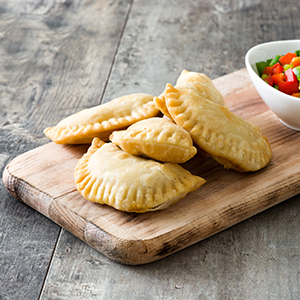
South American food isn't just the healthy, grains-based meals you may have envisaged. Sure, the rice and beans-based diet is a staple in the highlands, but the bulk of South American countries – Argentina, Brazil, Uruguay and Chile – like to lead you a little astray with a bit of alfajores here, a bit of dulce de leche there. Actually, the latter is on everything – breakfast, lunch, dinner, on desserts, bread, a jar next to the peanut butter in the morning… it’s fair to say dulce de leche reigns supreme as its own food group in this corner of the world. Luckily, Chile deals skillfully in both the sweet and savoury.
From avocados to asado, alfajores to pisco, Chile offers hearty, homegrown fare that sets itself apart from its neighbours. While many of its dishes are variations of things found in nearby countries, we think Chile offers up some of the best food on the continent; not least because avocados here are plentiful and don't require remortgaging your house to include in the weekly shop.
Here's our guide to the best eats in Chile.
Alfajores: A treat found all over the continent, but is found in its highest calibre in Chile. These shortbread biscuit-like, chocolate or coconut covered, dulce de leche-filled treats will soon become your South American staple, which I'm sure - due to their high sugar content - they were never intended to be. Money left over at a border? Buy as many alfajores as you can. Only enough money for lunch or treats? Buy alfajores. Only got $4 to feed you for three days before you can get to an ATM? Buy a bag of pasta – and alfajores. There are many variations, and while the artisanal ones reign supreme, Cadbury and Nestle et al. each do their own varieties too. But, take our advice: you can’t really go wrong whichever one you buy.

Empanadas: Your first introduction to these might be at your hotel in a cooking class – which you should absolutely partake in. These are one of the most readily-available and Moorish types of street food, which conveniently also costs barely a peso or two. Think not of a simple pasty, but of a mix of spiced meats (or vegetables for those that way inclined) and onions enclosed in a crumbly, yet crunchy parcel of pastry. These are found throughout South America, and the filling and size changes depending on where you are (Chile by far boasts the biggest). But, if you’re successful in your cooking class you’ll have the recipe down pat for the future anyway.
Asado: Another South American staple found on either side, above and below the Andes, the famed Chilean asado is every bit as good as you've heard. Whether you're in the mood for chicken, pork, or beef (or sometimes other, lesser-known animals; guinea pig is a true shock to the system) you can basically count on most Chilean restaurants offering asado of some description. The best way to go about it though is to find yourself a parilla, pick your cut, and get it grilled over some hot coals as you watch on – we're not sure exactly what magic happens between cooking and serving it up, but it puts Kiwi barbecues to shame.
Pastel de Choclo: This translates roughly into "corn casserole with meat stuffing" or more simply "corn cake", and it's every bit as hearty as it sounds. Prepared by grinding sweetcorn to form a paste, seasoning the mixture with basil, and then pre-cooking it with milk and lard - the corn is then stuffed with ingredients such as ground beef or chicken, raisins, black olives, onions and sliced hard-boiled egg and served in a skillet (much like a Chilean shepherd's pie, if you will). While it can be found now in Argentina, Bolivia and Peru, Chile lays claim to the dish as it was first documented within their borders.
Avocados: Chile just so happens to be the bohemian, hipster, Melburnian humans paradise, because it seems their most bountiful crop is the much-lauded avocado. Want it in a shake? Don’t have to ask for it, it’s already on the menu. In a burger? There’s more avocado than all the other condiments put together. On a hot dog? Sure, here's several great lashings. For no added cost (lest we forget the many dollars extra this will cost you in NZ in Australia for a small smattering), this will ooze out of every edifice of whatever you’ve ordered.

Pisco: It's not exactly a food group, but being derived by a grape - we think it's earned its inclusion. Most people solely associate pisco sours and the regional alcohol with Peru, but it also actually has a strong association with Chile; so much so that there’s even a town named after it. If nothing else, La Serena and the surrounding pisco valleys are worth a visit to see the vineyards, the beautiful jagged mountain scenery that frames it all and try undoubtedly the best pisco sour of your life. Pisco Elqui itself is a breezy little mountain town, resplendent with pisco distilleries and art studios, and plenty of terraces to try an avocado-pisco hybrid. Pisco itself is more or less a by-product of wine, and is made by distilling fermented grape juice. However, it doesn’t taste anything like wine: remember that when it’s being poured into a shot glass for you.
